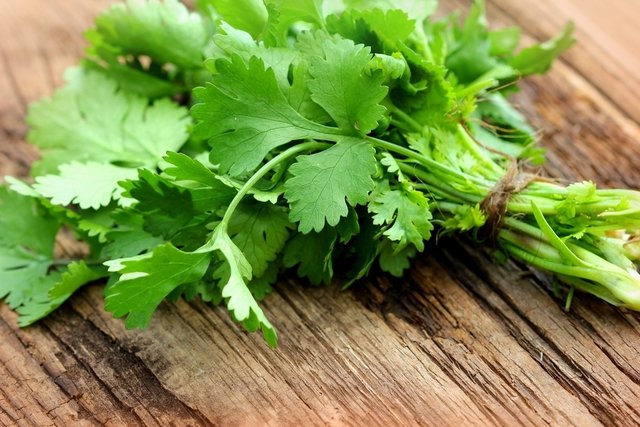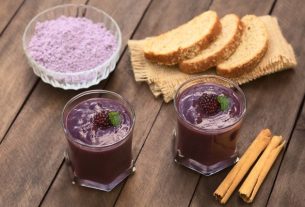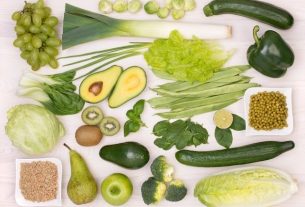Coriander is an aromatic plant rich in phenolic compounds, such as carotenoids, tannins, flavonoids and saponins that promote health benefits, such as controlling cholesterol and blood glucose levels, preventing diseases such as heart attack and diabetes. Furthermore, coriander has high amounts of potassium, which helps eliminate excess sodium in the urine, controlling high blood pressure.
Because it has a good concentration of vitamin C and vitamin A, coriander also helps fight free radicals, strengthening the immune system, preventing premature aging and maintaining skin hydration and firmness.
Coriander leaves and seeds can be found in supermarkets and markets, being used as a seasoning in salads, pastas, stews, juices, teas and as a base for curry seasoning.
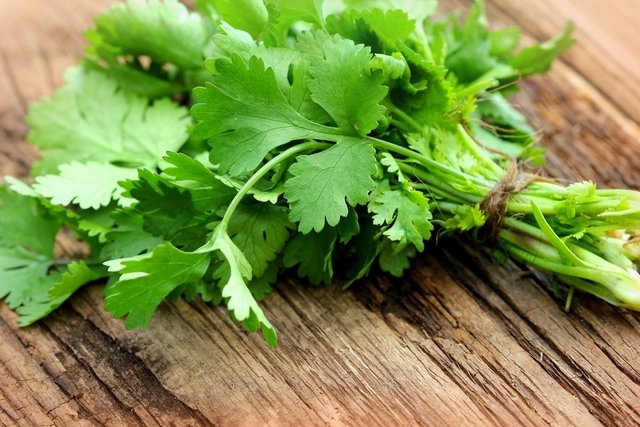
Main benefits
The main health benefits of coriander include:
1. Prevent some types of cancer
Coriander is rich in carotenoids, tannins and flavonoids, compounds with high antioxidant power that prevent the action of free radicals in the body, and can prevent some types of cancer such as breast, lung and prostate cancer.
2. Maintain skin health
Because it is rich in antioxidants that reduce damage caused by the sun’s ultraviolet rays, coriander helps prevent premature aging, reducing wrinkles and sagging. Furthermore, by protecting cells against free radicals, coriander helps prevent skin cancer.
3. Lower cholesterol and triglycerides
Because it has good amounts of healthy fats, such as oleic, palmitic and stearic fatty acids, as well as antioxidants such as vitamin C, coriander promotes the reduction of “bad” cholesterol levels, LDL, and triglycerides in the blood, preventing the formation of of fatty plaques in arteries and veins.
Furthermore, the center also favors the increase in “good” cholesterol, HDL, protecting the body against diseases such as heart attack, stroke and atherosclerosis.
4. Improve digestion
Coriander has a powerful anti-inflammatory and hepatoprotective action, which protects and improves liver function, improving food digestion and nutrient absorption.
5. Control high blood pressure
Coriander is rich in potassium, an important mineral that helps eliminate excess sodium from the body through urine, controlling high blood pressure. Furthermore, the plant is also rich in calcium, which helps relax the arteries, facilitating blood circulation.
6. Prevent diabetes
Because it contains antioxidant properties, coriander can strengthen the pancreas, improving the action of insulin, the hormone responsible for controlling blood sugar levels.
Some studies (1,2) showed that the consumption of coriander is capable of balancing blood sugar levels, preventing insulin resistance and diabetes.
7. Help detoxify the liver
Coriander has a powerful antioxidant effect that helps detoxify the liver, as it facilitates the elimination of toxins and toxic metals, such as mercury, from the body. See how to follow a diet to detoxify your liver.
8. Balance the intestine
Coriander essential oil has antimicrobial properties that combat excess bad bacteria in the intestine and balance the intestinal flora, preventing infections and diarrhea. Furthermore, coriander also helps combat constipation, as the plant stimulates natural bowel movements, helping to eliminate feces.
Coriander nutritional information
The following table provides nutritional information for 100 g of coriander:
Coriander can be consumed fresh or dehydrated, and can be added as a culinary seasoning, in juices, salads and teas.
How to use
In addition to being used as a fresh or dried herb in dishes with meat, fish, salads or juices, coriander leaves can also be used in the form of tea.
The seeds can be used fresh or dehydrated in teas, salads and as a base for curry seasoning. Furthermore, the seeds are also used in the production of essential oil.
-
Tea with coriander seeds or leaves: Coriander tea can be prepared by adding 1 tablespoon of the seeds to 500 ml of boiling water for 2 minutes, turning off the heat and letting the mixture rest for another 10 minutes, strain and serve warm. Another option is to place 1 tablespoon of coriander leaves in 250 ml of boiling water, leaving to rest for 5 to 10 minutes, strain and drink warm or cold.
- Coriander essential oil: Coriander essential oil can be found in health food stores and some drugstores and is obtained from the seeds of the plant, being used by the industry to prevent food contamination, to flavor meats and canned foods. Furthermore, in recent years the possibility of using coriander essential oil to combat infections such as dermatitis and candidiasis has been investigated.
Recipes with coriander
These are some tasty recipes to take advantage of all the benefits of coriander:
1. Cilantro sauce
Ingredients:
- 1 cup of coarsely chopped coriander;
- 1 clove of garlic;
- 2 tablespoons of lemon juice;
- 2 tablespoons of olive oil;
- 1 level teaspoon of salt;
- ½ cup of water;
- ¼ cup of cashew nuts.
Preparation mode:
Blend all ingredients in a blender until a uniform paste forms. This sauce can be used to accompany salads, red meat or barbecues.
2. Onion and cilantro omelet
Ingredients:
- 6 eggs;
- 2 tablespoons of chopped fresh coriander;
- 1 chopped onion;
- 1 clove of chopped garlic;
- 1 tablespoon of olive oil;
- Black pepper and salt to taste.
Preparation mode:
Place the eggs in a bowl and mix well with a fork until the whites mix well with the yolks. Add the rest of the ingredients and mix carefully. Heat a non-stick frying pan and add the olive oil. Add half of the omelet and cook for 2 to 3 minutes on each side or until golden. Repeat the procedure with the other half of the omelet. Wait for it to cool and serve with your preferred accompaniments.
3. Tilapia ceviche
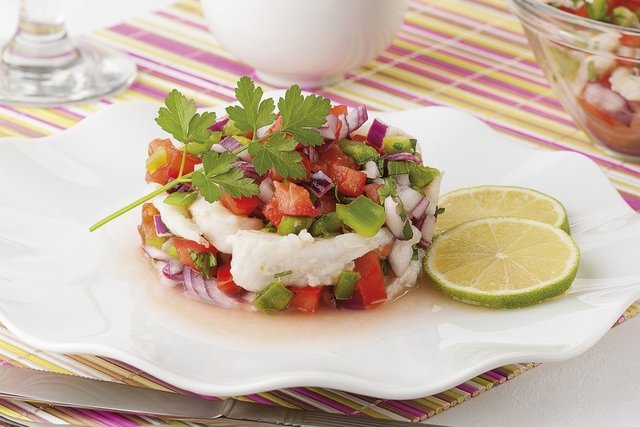
Ingredients:
- 6 tilapia fillets;
- 1 medium red onion;
- 1 chili pepper;
- Coriander to taste;
- 2 Tahiti lemons;
- Salt to taste;
- Black pepper to taste.
Preparation mode:
Cut the onions into thin strips and place in ice water for 10 minutes. Drain well and reserve. Remove the seeds from the pepper, cut into very small pieces and set aside. Wash the coriander leaves, chop and set aside. Place ice cubes in a large bowl, placing another smaller bowl on top. Cut the fish fillet into cubes and place in the smaller bowl on the ice. Add the chopped onion, pepper and coriander to the fish and season with lemon, salt and black pepper. Place in the fridge for a few minutes and serve.
4. Guacamole
Ingredients:
- 1 medium Brazilian avocado or 4 avocados;
- 1 large seedless tomato;
- 1 medium onion;
- 2 cloves of chopped garlic;
- 1 bunch of coriander;
- Juice of 1 large lemon;
- 1 tablespoon of extra virgin olive oil;
- 1 and ½ teaspoon of salt.
Preparation mode:
Mash the avocado roughly with a fork, leaving a few pieces to give texture. Add the chopped garlic, lemon juice, salt and olive oil and mix well. Chop the onion, tomato and coriander and add to the avocado mixture, incorporating the ingredients well. Serve with tortillas, nachos or as an accompaniment to rice and beans.

Sign up for our newsletter and stay up to date with exclusive news
that can transform your routine!
Warning: Undefined array key "title" in /home/storelat/public_html/wp-content/plugins/link-whisper-premium/templates/frontend/related-posts.php on line 12
Warning: Undefined array key "title_tag" in /home/storelat/public_html/wp-content/plugins/link-whisper-premium/templates/frontend/related-posts.php on line 13

